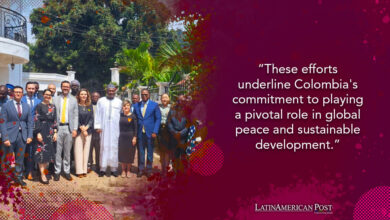The Repatriation of Artifacts is A Triumph for Cultural Heritage in Latin America

The recent return of archaeological artifacts to Mexico and Peru from the United States and Italy, respectively, highlights a growing global commitment to preserving cultural heritage, underscoring the importance of international cooperation in safeguarding Latin American nations’ historical and cultural identity.
Preserving Cultural Roots: A Global Movement
The voluntary return of 41 archaeological pieces of Mexican origin from New Mexico, United States, and the repatriation of 11 pre-Columbian artifacts to Peru from Italy are not merely isolated gestures of goodwill. They are potent affirmations of preserving cultural roots and serve as a beacon of hope for other nations grappling with losing their cultural heritage. These latest examples underscore a broader, more profound movement towards respecting and preserving nations’ cultural and historical identities, particularly in a region as culturally rich and diverse as Latin America.
The repatriation to Mexico, facilitated through the Consulate in Albuquerque by the Department of Cultural Affairs (DAC) of New Mexico, and the return of artifacts to Peru, following an investigation by the Carabinieri of the Unit of Rome, are significant steps in righting the historical wrongs of cultural appropriation and theft. These actions reflect a growing awareness and acknowledgment of the intrinsic value of cultural artifacts, not as mere objects of aesthetic or monetary value but as irreplaceable keys to understanding past civilizations and cultures.
INAH’s Assertion of Heritage: Mexican Roots Across Centuries
The Mexican National Institute of Anthropology and History (INAH) has stated that the pieces returned belong to Mexico’s heritage, highlighting their origin from various pre-Hispanic cultures established across regions like the central plateau, the west, and the north of Mexico, as well as in states like Oaxaca and Nayarit, dating between 200 and 900 AD. Similarly, the Peruvian artifacts, dating from the late intermediate period (400-900 AD) and belonging to the cultures of the Central Coast of Peru, were authenticated by archaeologists from the General Directorate for the Defense of Cultural Heritage under the Ministry of Culture of Peru.
These repatriations come at a time when Latin America is increasingly vocal about the return of its stolen and illegally exported heritage. Countries across the region, including Mexico and Peru, are intensifying their efforts to reclaim their cultural inheritance, challenging auctions in major cities worldwide where objects belonging to their heritage are being sold. The proactive stance of these nations, supported by international legal frameworks and bilateral agreements, signals a shift towards more robust protection and valorization of cultural assets.
The significance of these actions extends beyond the mere physical return of objects. They embody a profound respect for the cultural and historical narratives that these artifacts represent. Each repatriated item carries stories of ancient civilizations, offering insights into their social structures, religious practices, and daily lives. By reclaiming these artifacts, countries like Mexico and Peru are not only retrieving pieces of their past. Still, they are also reaffirming their identities and showcasing the richness of their cultural heritage to the world.
Moreover, the return of these artifacts serves as a deterrent to the illicit trade in cultural goods, highlighting the importance of legal and ethical considerations in acquiring and possessing cultural properties. It sends a clear message to collectors and institutions worldwide on the significance of provenance and the moral imperative of returning cultural objects to their rightful owners.
Global Cooperation: United Front Against Illicit Trafficking
The collaborative efforts between countries and international agencies in these repatriations underscore the potential for positive outcomes when nations work together to address common challenges. Such cooperation is crucial in the fight against the illicit trafficking of cultural objects, a problem that requires a coordinated global response.
The recent repatriations to Mexico and Peru are commendable milestones in the ongoing struggle to preserve cultural heritage. They exemplify what can be achieved through international solidarity and mutual respect for cultural heritage. These successes should inspire other countries in Latin America and beyond to pursue the return of their artistic treasures, fostering a global culture that values and protects the legacy of humanity’s past.
Also read: Mexico’s Pink March Signals a Regional Call for Democratic Transparency
As these efforts continue to gain momentum, it is essential to recognize the role of international cooperation, legal frameworks, and the growing public awareness and appreciation of cultural heritage. The return of these artifacts is not just a victory for Mexico and Peru but a triumph for preserving cultural heritage worldwide. It is a testament to the fact that, through collaboration and respect for each other’s histories and identities, we can work towards a future where cultural heritage is cherished and protected for generations.





